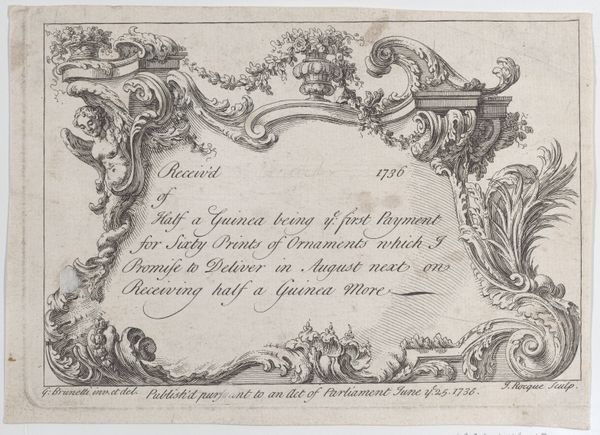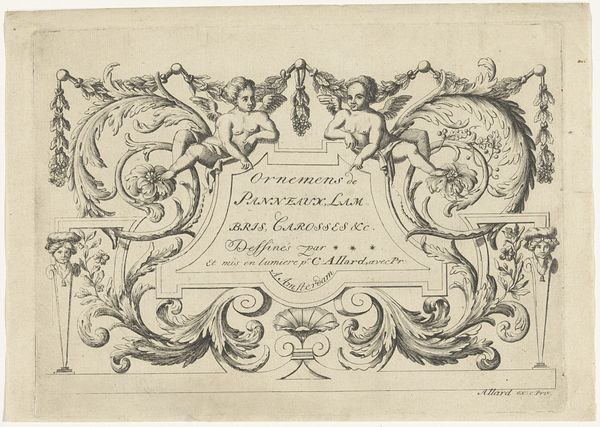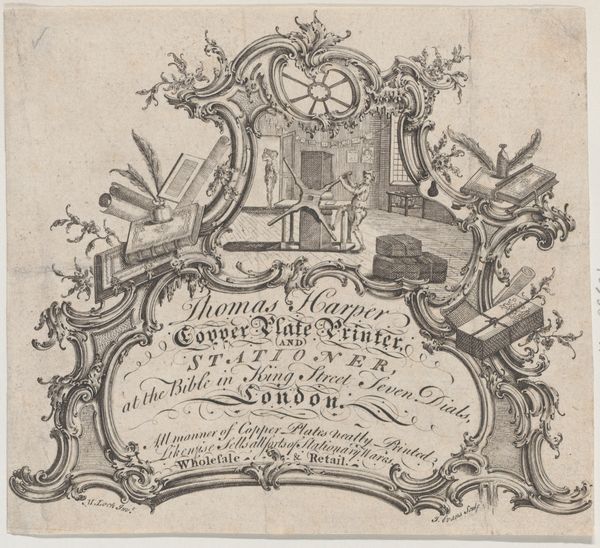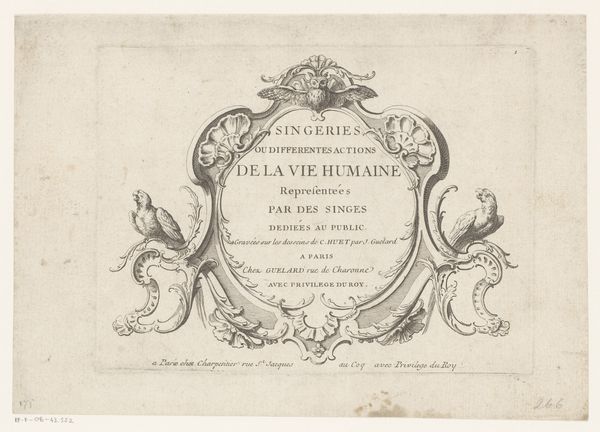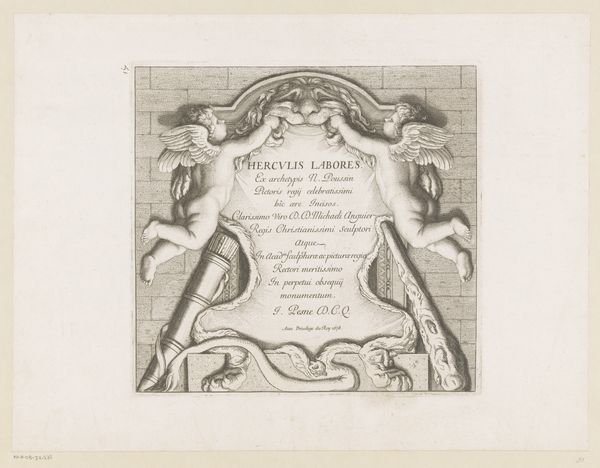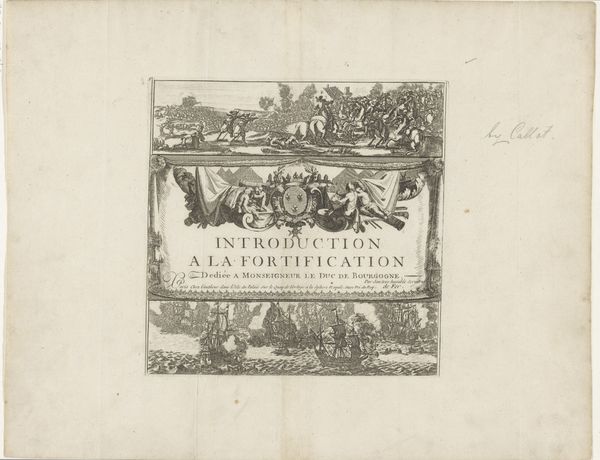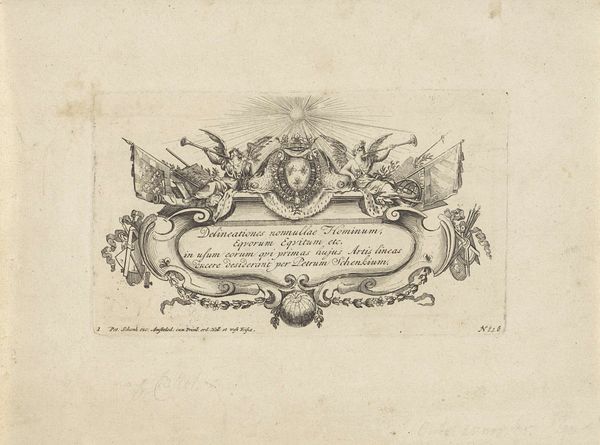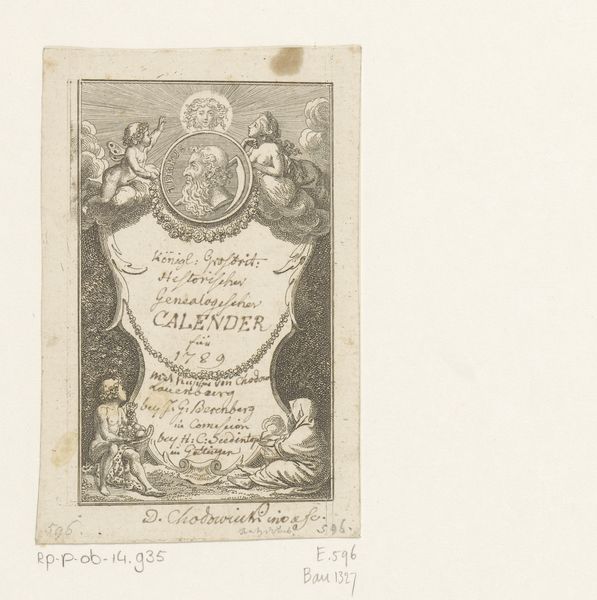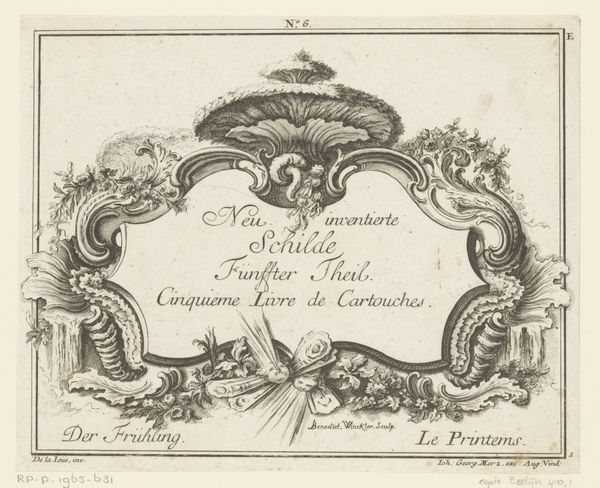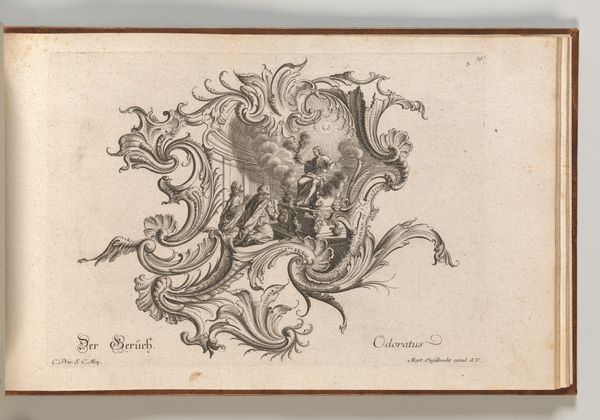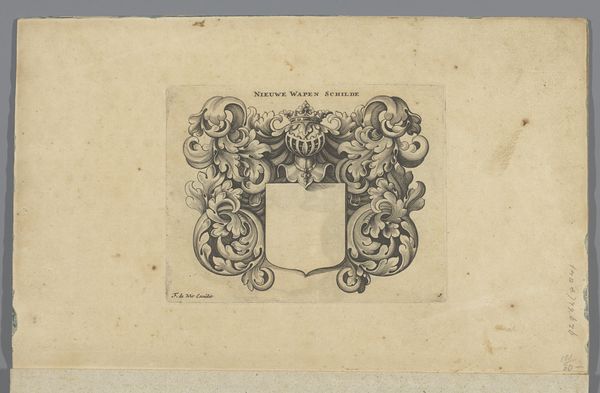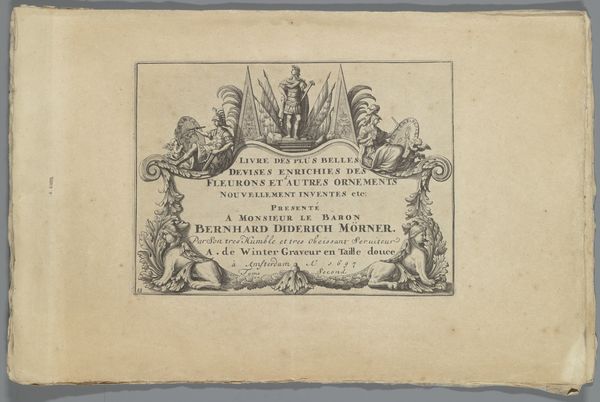
drawing, print, engraving
#
drawing
#
baroque
# print
#
line
#
engraving
Dimensions: Plate: 3 1/8 × 5 9/16 in. (8 × 14.1 cm) Sheet: 4 3/16 × 6 13/16 in. (10.7 × 17.3 cm)
Copyright: Public Domain
Curator: This is Stefano della Bella's "Title Page: Paisages maritimes," an engraving from between 1639 and 1649, now residing here at the Metropolitan Museum. Editor: My first impression is a feeling of delicate fantasy, almost dreamlike. The framing device with the two fantastical sea creatures draws my eye in a captivating way. Curator: Bella was a prolific printmaker. He benefitted from aristocratic patronage. This title page would have been the entryway into a series of maritime landscapes. Look at the fine, almost obsessively detailed lines – it's truly exquisite craftsmanship when we consider the processes and the material limitations imposed by engraving. Editor: I'm struck by the choice of marine creatures flanking the title. It evokes not just the romance of the sea, but also raises questions of empire and colonialism in the 17th century. Who has the power to name and claim these "maritime landscapes," and at whose expense? Were these voyages solely seen as artistic opportunity, or as an excuse for colonial and patriarchal power grabs? Curator: Absolutely, and consider the materials. Engraving allows for dissemination. Reproducibility connects directly to larger commercial contexts of the era and facilitated widespread dissemination of artistic ideas to bourgeois buyers who sought to assert cultural capital in their homes. Editor: Right, and I wonder how Bella’s identity and position as a male artist informed the selection and portrayal of these seascapes. Are these seas presented as sites of freedom, of subjugation, of trade? Are we considering labor exploitation, as Bella benefited directly from royal privilege in that era, reinforcing patriarchal models? Curator: Well, we see "Paisages Maritimes. Faicts par S. D. Bella..." It declares that Bella made them and one wonders about collaboration and the actual material labour that was required. What we learn from a close examination of its creation helps destabilize traditional authorship, expanding it beyond a single individual artist. Editor: That's right, who were those "collaborators", assistants in his studio? Perhaps nameless women contributing? To bring this piece into a contemporary dialogue, we have to deconstruct those hierarchical systems. Curator: Looking closer helps appreciate this little print, revealing a connection between art, commerce, and the means by which knowledge was created and disseminated during a key moment in history. Editor: Precisely! I appreciate thinking through its historical framework by focusing on power, how privilege is reinforced, and by remembering art making is also an inherently material practice, intertwined with labour, context, and production processes.
Comments
No comments
Be the first to comment and join the conversation on the ultimate creative platform.
